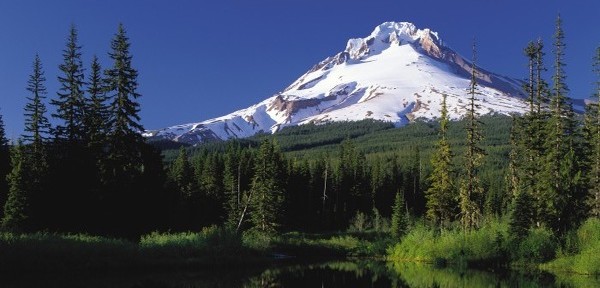OVERVIEW
Mount Hood (11,239 ft.), Oregon’s highest peak, forms a prominent backdrop for Portland and most of Northern Oregon and Southern Washington. Located 50 miles east of Portland, Mt. Hood rises nearly seven thousand feet higher than any other peak within 70 miles. Due to its prominence, proximity to an urban center and the well maintained road that runs high onto its south side, Mt. Hood is a popular destination for climbers.
 Mount Hood South Side Routes
Mount Hood South Side Routes
Mt. Hood was first climbed on August 6, 1857 by Henry Pittock, W.L. Chittenden, James G. Dierdorff, W.L. Buckley, and L.J. Powell by way of the Old Chute, a route that remains one of the most popular summit approaches. Mt. Hood is currently one of the most climbed glaciated peaks in the world, with some claims putting it at second behind only Mt. Fuji in Japan. It is estimated that 15,000 to 20,000 climbers make the attempt each year, and on a clear spring morning it's common to see a nearly solid line of headlamps stretching from Crater Rock to the summit.
The South Side Route, which begins at Timberline Lodge parking lot (5,924 ft.), is the shortest and by far the most popular route to the summit. Mt. Hood’s popularity and dubious distinction as an “easy non-technical hike” or as a “walk up” is a misconception that tends to increase the number of deaths on the mountain. These inexperienced climbers in conjunction with severe weather (which can move in quickly) or the ever present danger of avalanches, rock and ice fall account for most accidents.
DISCLAIMER
This guide is meant to be the most comprehensive resource available for a climb of the southern side of Mt. Hood. However, mountain conditions are subject to change, weather may change rapidly and safety always depends on preparation, skill and judgment of the climbers involved. Any guide, no matter how comprehensive, can give you only limited advice and information.
The below descriptions and recommendations are not guarantees of safety and we do not list every possible hazard that a climber may confront. A large part of the excitement and challenge of climbing is meeting risks that can not be predicted and are not normally present in a non-mountain environment. When you climb you assume these risks and must assume responsibility for your own safety.

